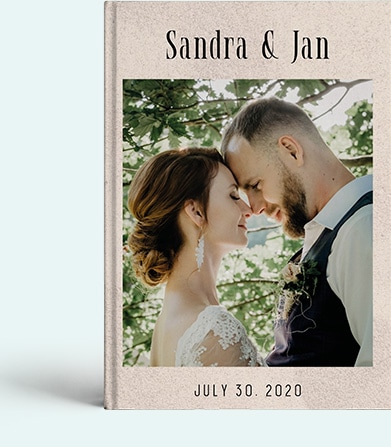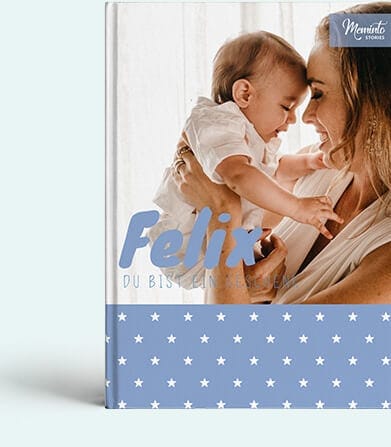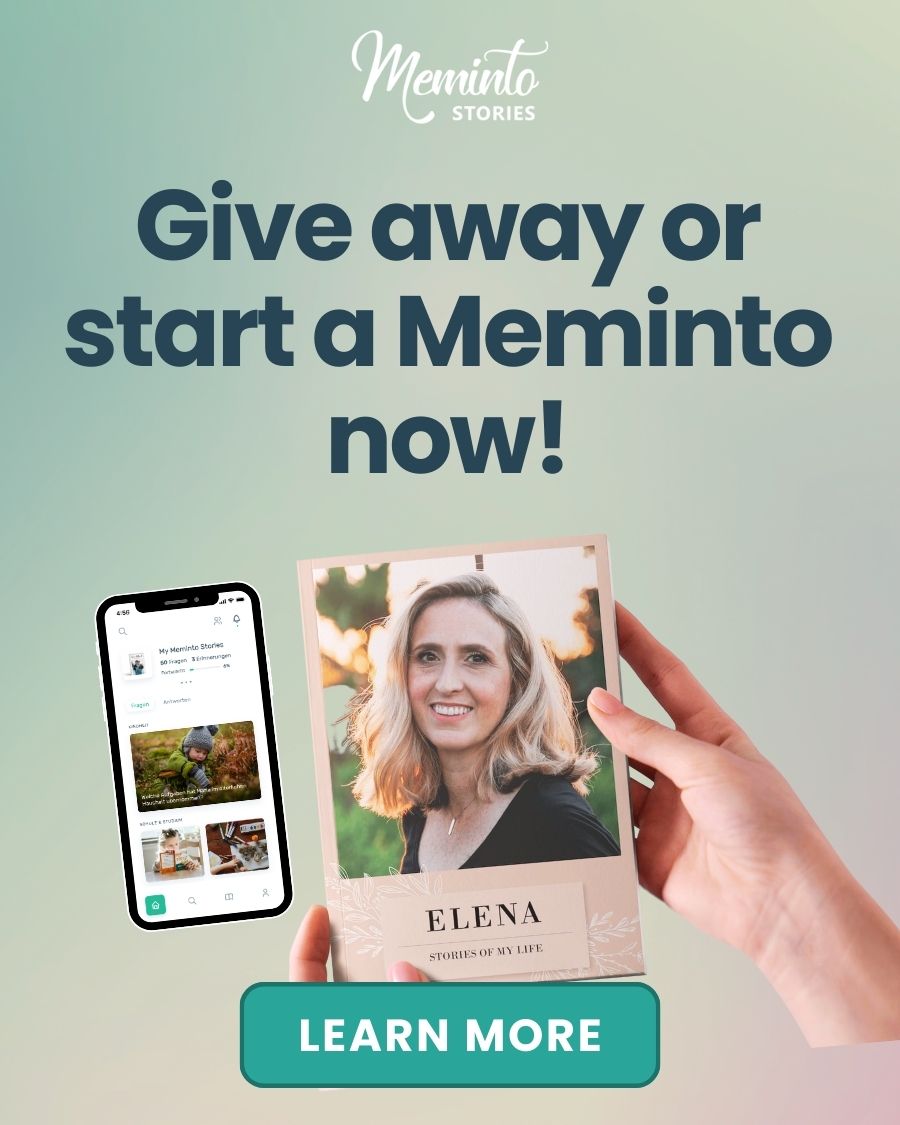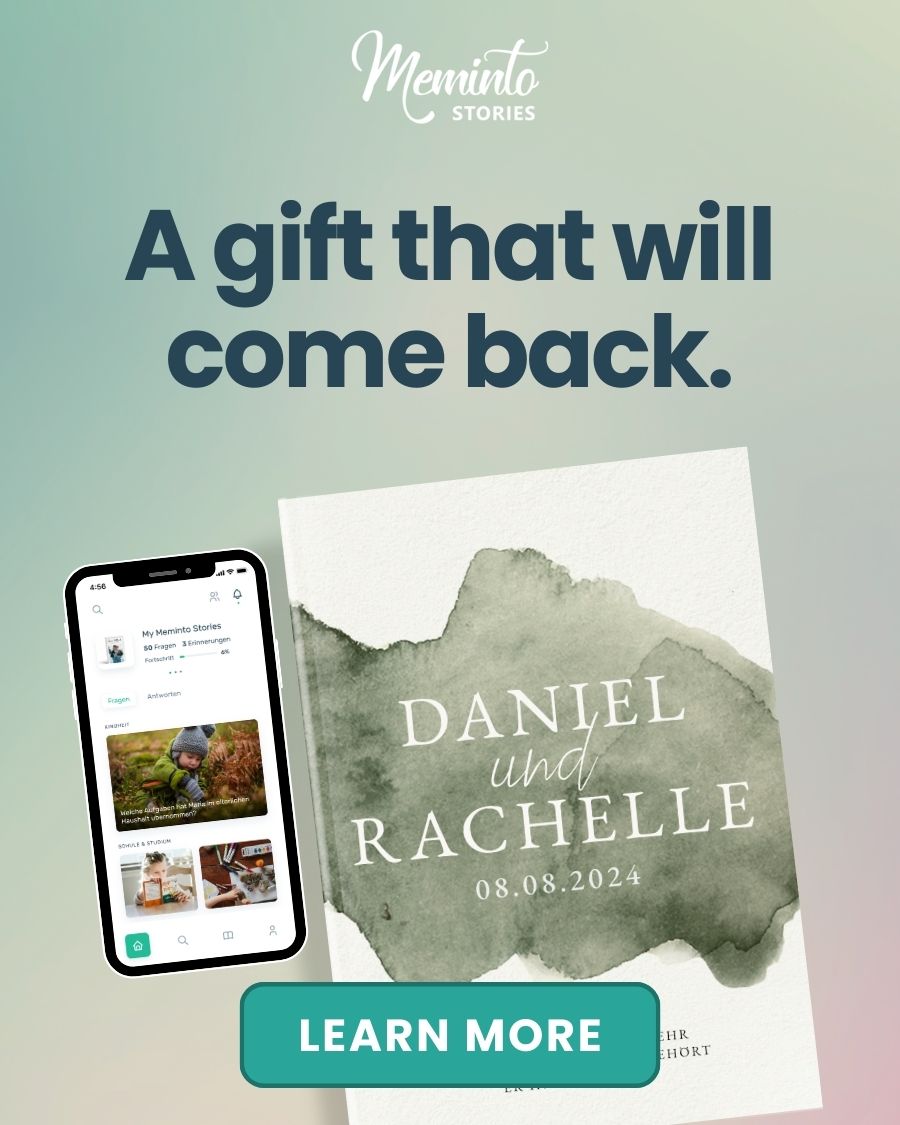You’ve got thousands of photos scattered across your phone, computer, and maybe a few old hard drives. There are voice memos you recorded but never organized, stories your family tells at gatherings, and memories you keep meaning to write down. But every time you think about turning all of this into something meaningful, the task feels overwhelming.
Maybe you’ve tried creating photo books before, only to get frustrated with clunky software or limited design options. Or perhaps you’ve wondered how other families create those beautiful memory books that look so professional and polished.
This guide will show you how to create memory books online, from choosing the right platform to organizing your content and designing a book your family will treasure. You’ll learn how to turn scattered digital memories into a beautiful, lasting keepsake without technical skills or design experience.
🗝️ Key takeaways
-
Online memory book platforms break down barriers. You no longer need physical supplies or design skills. They let families work together in real-time, no matter where they are.
-
Good preparation helps a lot. By defining your story’s purpose and collecting content step-by-step, you make the creation process easier and more fun.
-
Successful memory books balance structure with creativity by choosing the right organizational framework and designing for both immediate impact and long-term discovery.
-
Hearing from various generations during the review makes your book a treasured keepsake. This feedback ensures it won’t be just another forgotten project.
-
Modern platforms like Meminto use guided prompts and multimedia tools. This helps families make professional-quality books easily, even without technical skills.
Why create memory books online?
Making memory books online helps families save their stories without barriers. Traditional scrapbooking demands physical supplies, dedicated workspace, and considerable time investment.
More importantly, it limits collaboration to whoever has physical access to the book. Online platforms eliminate these constraints while adding capabilities impossible with physical books.
1. Seamless family collaboration across distances
Physical scrapbooks restrict participation to whoever can physically handle the book. Online memory books transform this limitation into an opportunity. Family members can all contribute at the same time, even from different places. This helps create richer and more complete stories.
As Albert from Germany experienced when his grandfather died,
“When my grandpa died, my whole family, 17 people in total, created this book. We simply answered questions about his life. I was able to read so many new stories about him that I didn’t know yet!”
This collaborative approach often reveals forgotten memories and family perspectives that a single author would never capture.
2. Professional design without professional costs or skills
Traditional scrapbooking relies on individual artistic ability, expensive supplies, and time-intensive layouts.
Online platforms provide professionally designed templates, automatic formatting, and layout guidance that would typically cost hundreds of dollars from a graphic designer. The result is polished, cohesive books that look custom-made without requiring design experience or artistic talent.
3. Multimedia preservation impossible with physical books
Traditional photo albums are limited to static images and written text. Online memory books can integrate voice recordings, video clips, and interactive elements that bring memories to life in unprecedented ways.
QR codes can link to original audio recordings, embedded videos can show movement and expressions, and voice-to-text features can capture family stories exactly as they’re told.
4. Permanent digital preservation with physical output
Physical scrapbooks are vulnerable to damage, loss, and deterioration over time. Online platforms automatically back up all content to secure cloud storage while still producing high-quality printed books.
This dual approach ensures memories survive both digital obsolescence and physical damage. Multiple copies can be ordered affordably, allowing families to share books across generations and geographic distances.
5. Accessibility for all technical comfort levels
Modern online platforms are designed for users regardless of their technical expertise. Features like speech-to-text conversion, drag-and-drop interfaces, and guided prompts make memory creation accessible to grandparents who might struggle with traditional word processing software while still offering advanced customization for tech-savvy users.
What you need before starting
Starting an online memory book without proper preparation leads to frustration and half-finished projects sitting on your computer. A little upfront planning saves hours of confusion later and helps you create something your family will actually treasure.
Know what story you’re telling
Are you documenting your child’s first year? Preserving your grandmother’s recipes and wisdom? Celebrating a marriage milestone?
Your story’s focus determines everything else. A clear purpose prevents you from getting lost trying to include every photo you’ve ever taken. Start specific, then expand if needed.
Collect what you already have
Don’t organize everything perfectly before starting, but gather your materials in one place. Create simple folders on your computer for photos, videos, and any written memories.
Include screenshots of meaningful text messages, saved social media posts, and digital documents that matter to your story.
As Maria from Germany discovered,
“I initially wanted to document my life for my children. Thanks to Meminto’s insightful questions and prompt support, my story flourished into over 300 pages across two volumes.”
Sometimes gathering materials reveals stories you didn’t know you wanted to tell.
Handle physical items simply
Look through printed photos, letters, tickets, or small keepsakes that belong in your story. Most smartphones can capture these items well enough for your memory book.
Don’t stress about perfect scanning or professional photography. Focus on including items that add meaning, not achieving museum-quality digitization.
Involve others from the beginning
If family members should contribute, contact them before you start building. Tell them what you’re creating and ask if they want to participate.
Be specific about what would help: photos from certain events, written memories, or voice recordings. Early communication prevents discovering that your sister had perfect photos for your book after you’ve already finished.
Be realistic about time
Online memory books can take a weekend or stretch over months, depending on your approach. Be honest about your schedule and energy. It’s better to complete a simple book than abandon an overly ambitious one.
As Werner from Germany experienced,
“With just one question per week, I was able to record my life story. That was a lot of fun! I am proud of my book and am already preparing the second book.”
Small, consistent progress often works better than intense weekend sessions.
How to create a memory book online: 5 essential steps
Creating an online memory book might seem overwhelming when you’re staring at thousands of photos and wondering where to begin. The key is breaking it into manageable steps rather than trying to tackle everything at once.
These five steps will take you from scattered digital memories to a finished memory book sitting on your coffee table. You don’t need to be tech-savvy or complete everything in one sitting.
As Reiner from Germany found,
“My daughter gave me the book so that I could write down my life for my grandchildren. I wrote the whole book on my smartphone and am amazed at how well it worked despite the small display.”
The process adapts to your pace and comfort level, whether you prefer working on your phone during lunch breaks or dedicating weekend afternoons to the project.
Step 1: Choose your platform and set goals
Before you upload a single photo or write your first sentence, pause. This step sets the foundation for everything else. Get it right, and the rest flows naturally. Get it wrong, and you’ll spend hours wrestling with a platform that doesn’t match your vision.
Define Your Memory Book’s Purpose
Not all memory books serve the same purpose, and that’s perfectly fine. Your choice here shapes every decision that follows.
| Memory Book Type | What This Means | Best Platform Features |
| Family Legacy | Preserving stories for future generations | Guided prompts, family collaboration, professional printing |
| Celebration Book | Commemorating specific events or milestones | Visual layouts, easy photo integration, quick completion |
| Personal Reflection | Processing your own experiences and growth | Privacy controls, journaling features, multimedia support |
| Gift Project | Creating something special for someone else | Customization options, surprise collaboration, quality materials |
Think about who will read this book and when. A memory book for your newborn daughter serves a different purpose than one celebrating your parents’ 50th anniversary. Your choice determines whether you need features like family collaboration, privacy settings, or specific design templates.
Match Platforms to Your Natural Workflow
Consider how you actually work, not how you think you should work. Some people thrive with detailed planning and structured approaches. Others prefer jumping in and figuring it out as they go.
As Anja from Germany shared,
“I felt well taken care of by Meminto. They made me feel like my project was just as important to them as it was to me. I am proud to finally hold my book in my hand. It brings me joy and satisfaction, and I can cross it off my bucket list.
- Structured approach: Platforms with guided prompts, templates, and step-by-step processes work well if you like clear direction and don’t want to reinvent the wheel.
- Creative freedom: Open-ended platforms suit people who have specific design visions and enjoy the creative process more than following templates.
- Collaborative style: If multiple family members need to contribute, prioritize platforms designed for easy sharing and multiple contributors rather than trying to coordinate through email and file sharing.
Assess Your Technical Comfort Zone Honestly
Be realistic about your relationship with technology. There’s no shame in choosing simplicity over features you’ll never use. The best platform is the one you’ll actually complete your project on.
Tech-comfortable users might enjoy platforms with extensive customization, multiple export options, and advanced design tools.
Tech-hesitant users benefit more from platforms with intuitive interfaces, automatic formatting, and excellent customer support.
Mobile-first users should prioritize platforms with strong smartphone apps, since that’s where most of your photos and memories already live.
The goal isn’t finding the most impressive platform. It’s finding the one that fits your story, your family, and your actual workflow rather than your ideal one.
Step 2: Gather and organize your content
This is where your memory book transforms from an idea into something tangible. You’re not trying to organize your entire digital life here. You’re simply collecting the pieces that tell your specific story.
Start with What You Can Find Easily
Don’t spend hours hunting through old hard drives or cloud accounts. Begin with what’s already accessible on your phone and computer. You might be surprised how much story you can tell with recent photos and memories.
Barbara from Germany took this approach when she said,
“We started a Meminto when my mother was still alive and we made a lot of audio recordings. Now I listen to it from the book every time I miss her.”
She focused on capturing what mattered most in the moment rather than achieving complete historical coverage.
Create simple folders with clear names:
- Main Photos: Your best images that tell the story
- Supporting Images: Screenshots, documents, or background photos
- Audio/Video: Voice memos, video clips, recorded conversations
- Written Memories: Text messages, emails, journal entries, or notes
The Three-Layer Content Strategy
Think of your content in three layers, like building a house. You need a strong foundation, supporting structure, and finishing details.
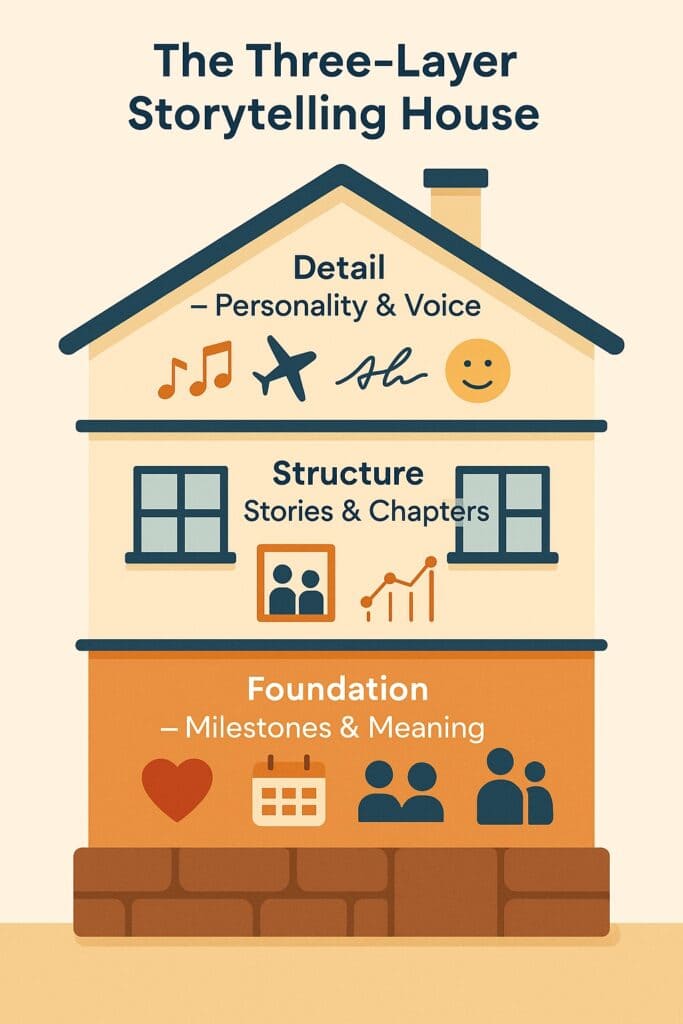
Quality Over Quantity Every Time
Resist the urge to include every photo from every event.
As Carolin from Germany noted,
“With the capacity for up to 250 pictures, it’s also cheaper than a photo book, especially with 300 pages.”
Even with room for many photos, choosing the right ones makes a bigger impact than including everything.
Ask yourself: Does this photo add something new to the story? Does it capture an emotion or moment that others don’t? Would someone flip past this quickly, or would it make them pause and remember?
If your picture needs restoration, check this out to learn the best tools for restoring and colorizing family photos.
Handle Physical Items Simply
For printed photos, letters, or small keepsakes, use your phone’s camera to capture them. Don’t worry about perfect lighting or professional scanning.
Natural light from a window usually works better than overhead lighting. Lay items flat on a neutral background and take several shots so you can choose the clearest one later.
Create a Simple Naming System
As you gather content, name files clearly so you can find them later. Use formats like “2023-12-Christmas-family-dinner” or “Mom-childhood-story-audio.” Future you will thank present you for this small effort.
The goal isn’t a perfect organization. It’s gathering enough good content to tell your story in a way that feels complete and meaningful to your family.
Step 3: Structure your memory book
You’ve got your content gathered, now comes the part that separates memory books that get treasured from ones that sit unread. Structure isn’t about rigid rules or perfect organization. It’s about creating a flow that makes sense to the people who will read it.
Choose your story framework
Most successful memory books follow one of three basic structures. Pick the one that feels most natural for your content and story type.
- Chronological storytelling: This follows time from beginning to present. It works beautifully for life stories, childhood books, or relationship journeys.
The advantage is that it feels logical and easy to follow. The challenge is making sure each time period gets appropriate attention rather than rushing through some years and lingering too long on others.
- Thematic organization: This groups memories around topics like family, friendships, achievements, or traditions. Perfect when you want to highlight specific aspects of life rather than covering everything in order.
As Viktoria from Switzerland discovered,
“Together with my son I have been able to record almost a century of history. We have created 16 books in German and seven in English.”
Organizing by themes let them create multiple focused books instead of one overwhelming volume.
- Milestone-focused approach: This centers on key moments and builds outward from there. Great for event-specific books or when certain experiences define the story more than steady progression.
Create Your Chapter Blueprint
Think of chapters as stopping points where readers can pause and reflect. Each chapter should feel complete while connecting to the larger story.
| Chapter Type | Content Focus | Typical Length |
| Scene& Setting | Background, context, key people | 3-5 pages |
| Story Chapters | Main events, experiences, growth | 8-12 pages |
| Reflection Breaks | Lessons learned, family wisdom | 2-4 pages |
| Visual Interludes | Photo collections, memorabilia | 4-6 pages |
Map Your Content to Structure
Once you’ve chosen your framework, assign your gathered content to specific sections. Don’t try to force everything in.
As Selma from the UK shared,
“With Meminto Stories I found a way to keep all my flashbacks of the first adventure with our child in a book. Now we can cherish them forever.”
She focused on meaningful memories rather than comprehensive coverage.
Create a simple outline:
- Opening: Sets the stage and introduces main themes
- Core sections: 3-5 main chapters that carry your story
- Connecting pieces: Transitions that link different time periods or topics
- Closing: Reflects on the journey and looks forward
Plan for White Space and Breathing Room
Resist the urge to pack every page with content. Memory books need visual and emotional breathing room.
Plan spreads that feature single powerful photos, meaningful quotes, or simple text layouts. These pauses help readers absorb what they’ve just experienced before moving to the next memory.
Test Your Flow with a Quick Walkthrough
Before you start building, mentally walk through your planned structure. Does it feel like a story someone would want to follow? Are there natural stopping points? Does the ending feel satisfying? If something feels off, adjust now rather than after you’ve spent hours building pages.
Remember, structure serves your story, not the other way around. The best memory book structure is the one that helps your family connect with and remember the experiences you’re preserving.
Step 4: Design and build your book
Think of this step like decorating your home. You wouldn’t hang every photo you own on every wall or use every color in every room. Your memory book needs the same thoughtful curation.
The Living Room Approach to Layout Design
Your memory book should feel like walking through a well-designed home. Some rooms are cozy and intimate, others are grand and impressive. Create this same variety in your pages.
Intimate spaces feature close-up photos with handwritten captions or personal reflections. Think bedside table photos with gentle lighting and soft layouts.
Grand entrance moments showcase your most stunning images with minimal text, letting the photos command attention like artwork in a gallery. Comfortable gathering areas mix multiple photos with story text, creating layouts where readers want to linger and absorb details.
Start with Your Showstoppers
Every memory book has 5-10 photos that take your breath away. These are your showstoppers: the image that perfectly captures your child’s personality, the candid shot that shows pure joy, the group photo where everyone looks genuinely happy. Build your design around these anchor images.
Place showstoppers on right-hand pages where they’ll have maximum impact when the book opens. Give them breathing room.
As Natalie from Australia discovered,
“What I liked was capturing memories in the form of videos and audios. Nobody does that as well as Meminto. We both had fun answering the questions and became closer. The childhood book is next.”
Sometimes the most powerful design choice is what you leave out.
The Three-Page Rule for Story Flow
Plan your content in three-page clusters: setup, story, reflection.
Page one introduces the context with supporting photos and brief background. Page two delivers the main content with your strongest photos and detailed story. Page three reflects with quotes, aftermath photos, or lessons learned.
This rhythm prevents your book from feeling like a flat photo album while avoiding overwhelming readers with too much information at once.
Layer Stories Like Music
Great memory books have multiple layers happening simultaneously, like a good song with melody, harmony, and rhythm working together.
Your melody is the main story thread running through the book. Your harmony consists of supporting details, background context, and family reactions.
Your rhythm comes from varying page layouts, alternating busy and calm sections, and creating natural pause points.
Design for Discovery, Not Display
Create pages that reward close examination. Hide small details that family members will discover on their second or third read-through: tiny photos tucked into corners, meaningful dates in page numbers, or inside jokes embedded in captions.
As Graziano & Federica from Italy noted,
“For our Meminto Stories Travel book, we selected an adventure that brought us closer together: Marrakech 2022. It was the best post-pandemic adventure of our lives! As the protagonists, we can relive our memories as if they happened today, still smelling the orange blossoms in Jardin Majorelle.”
Design should transport readers back into the actual experience, not just show them what happened.
The Five-Second Test
For each page spread, ask: Would someone understand the essential story in five seconds, but find new details if they studied it for five minutes? This balance between immediate impact and deeper discovery separates memorable books from forgettable ones.
Your goal isn’t creating the most elaborate design possible. It’s designing something that serves your story so well that years later, opening the book instantly transports your family back to these moments.
Step 5: Review and share your memory book
You’re almost there. Your memory book exists, pages filled with photos and stories that capture what matters most. But before you hit “order” or “publish,” this final step separates books that become family treasures from ones that sit unopened because of small, fixable problems.
Step Away, Then Return with Fresh Eyes
Close your laptop. Put down your phone. Don’t look at your memory book for at least 48 hours.
When you come back, you’ll notice things that were invisible when you were deep in creation mode: typos you read over dozens of times, photos that don’t quite work, or transitions that feel abrupt.
Read through your book as if you’re discovering it for the first time. Does the story flow naturally? Are there jarring jumps between sections? Do the photos support the story or just fill space?
As Richard from the UK experienced,
“I recorded my entire book, and Meminto transcribed it. It was simple and still led to something remarkable.”
Sometimes the most remarkable books are the ones that feel effortless to read.
The Three-Generation Test
Show key pages to three different people: someone your age, someone older, and someone younger. Each generation will catch different issues.
Older readers might notice historical details you got wrong or suggest missing context. Younger readers will spot unclear references or outdated language. Peers will catch tone problems or story gaps.
You don’t need to implement every suggestion, but pay attention to consistent feedback across multiple readers.
The Final Polish Checklist
Before printing or sharing, run through these essential checks that separate amateur efforts from family heirlooms:
- Visual clarity: Zoom into photos at 100% view. Pixelated images on screen become worse in print
- Text flow: Read everything aloud to catch awkward phrasing and missing words
- Consistent formatting: Check that fonts, spacing, and layouts match throughout
- Color accuracy: Bright computer screens can hide dull printing results
- Navigation logic: Ensure page turns and section transitions feel natural
Design Your Reveal Moment
Think beyond just completing the book. How will people first encounter it? Will it be a surprise gift, a family gathering centerpiece, or a quiet personal discovery? The unboxing experience can amplify all your careful work.
Digital sharing works for distant family who want immediate access. Physical copies create the lasting impact that gets passed down through generations. Hybrid approaches let you share previews while reserving printed copies for the most meaningful recipients.
As Jessica & Marco from Germany discovered,
“Our guests gathered stories about us and also recorded the wedding day for us in the book, with lots of pictures and videos. We can always pick it up and dive back in. Really nice.”
Books designed for repeated viewing and easy access become family traditions rather than one-time projects.
From Project to Keepsake
Your memory book represents weeks of gathering, organizing, and designing.
These final steps ensure that effort becomes something your family genuinely treasures rather than politely appreciates.
The difference lies in the details you perfect now, before anyone else sees the finished result.
Get $10 off your first Meminto book project 📖
We appreciate you for reading this article. As a token of our gratitude, we would like to offer you a special $10 discount on your first book with Meminto!
💡 Conclusion: Start creating today
Creating a memory book online doesn’t require perfect photos, complete stories, or endless free time. It requires something simpler: the decision to begin.
You already have everything you need scattered across your phone, computer, and heart. Those everyday moments that feel ordinary right now will become extraordinary when viewed through the lens of time.
As Willi from Germany shared,
“I wrote my Meminto Stories book mainly as a keepsake for my grandchildren and great-grandchildren. Not only was it a breeze to do, but it was a lot of fun.”
The memories you preserve today become tomorrow’s family treasures. Every photo you organize, every story you capture, and every moment you document creates something that transcends the digital clutter of modern life. Your family will thank you for taking the time to transform scattered memories into something tangible they can hold, share, and pass down.
Ready to turn your digital memories into a beautiful, lasting keepsake? Meminto makes creating memory books simple with guided prompts, collaborative features, and professional printing that brings your family’s story to life.








